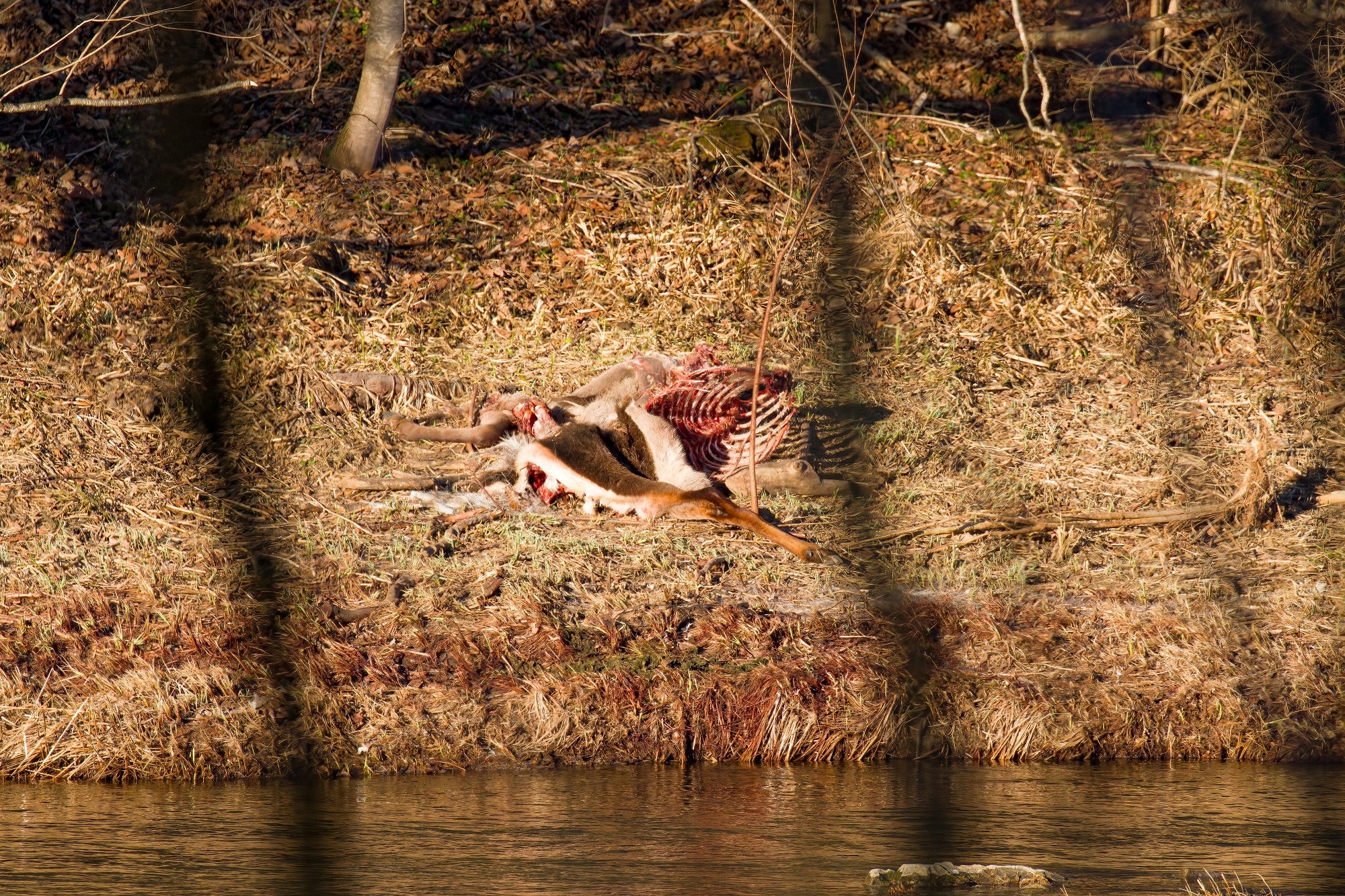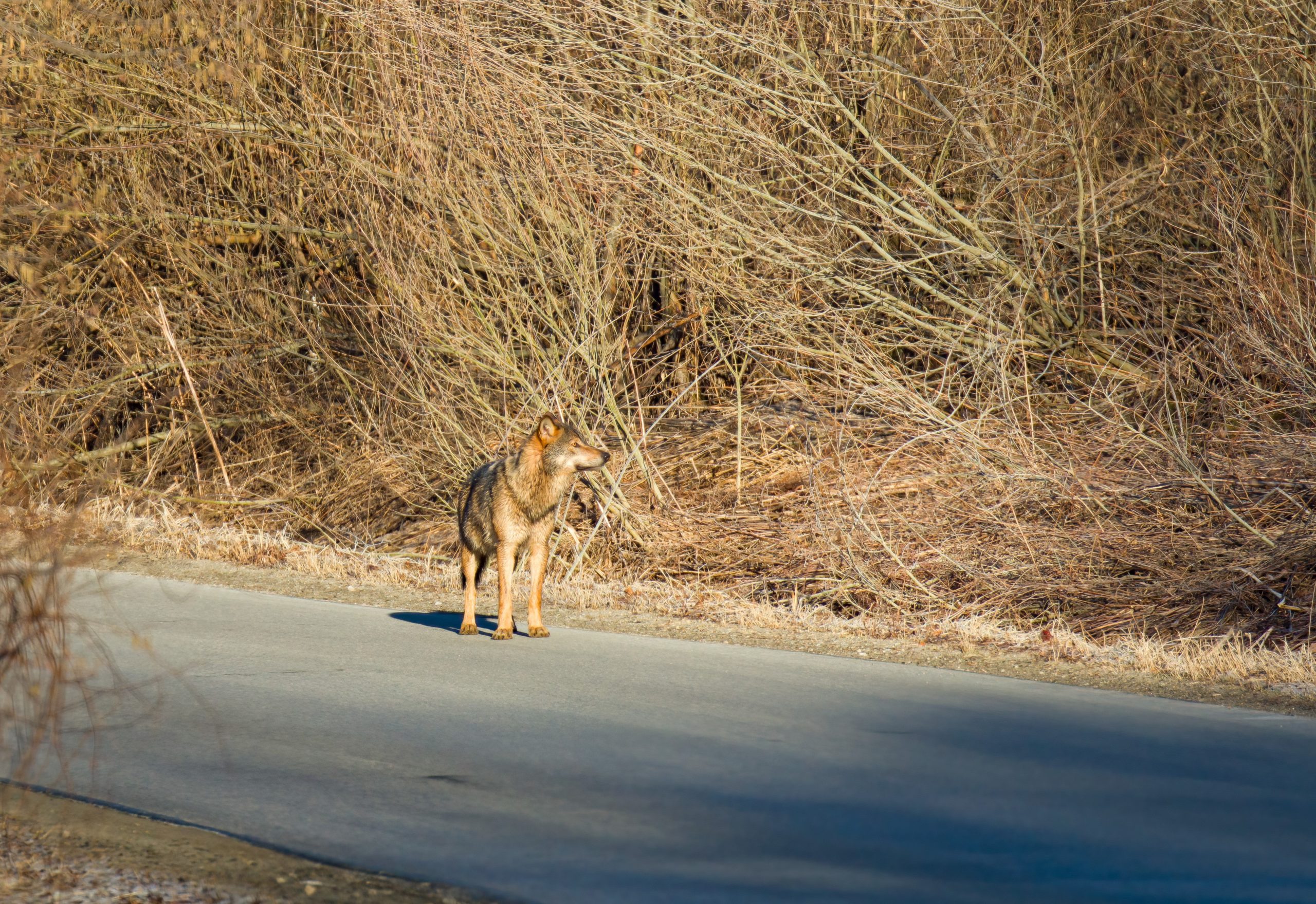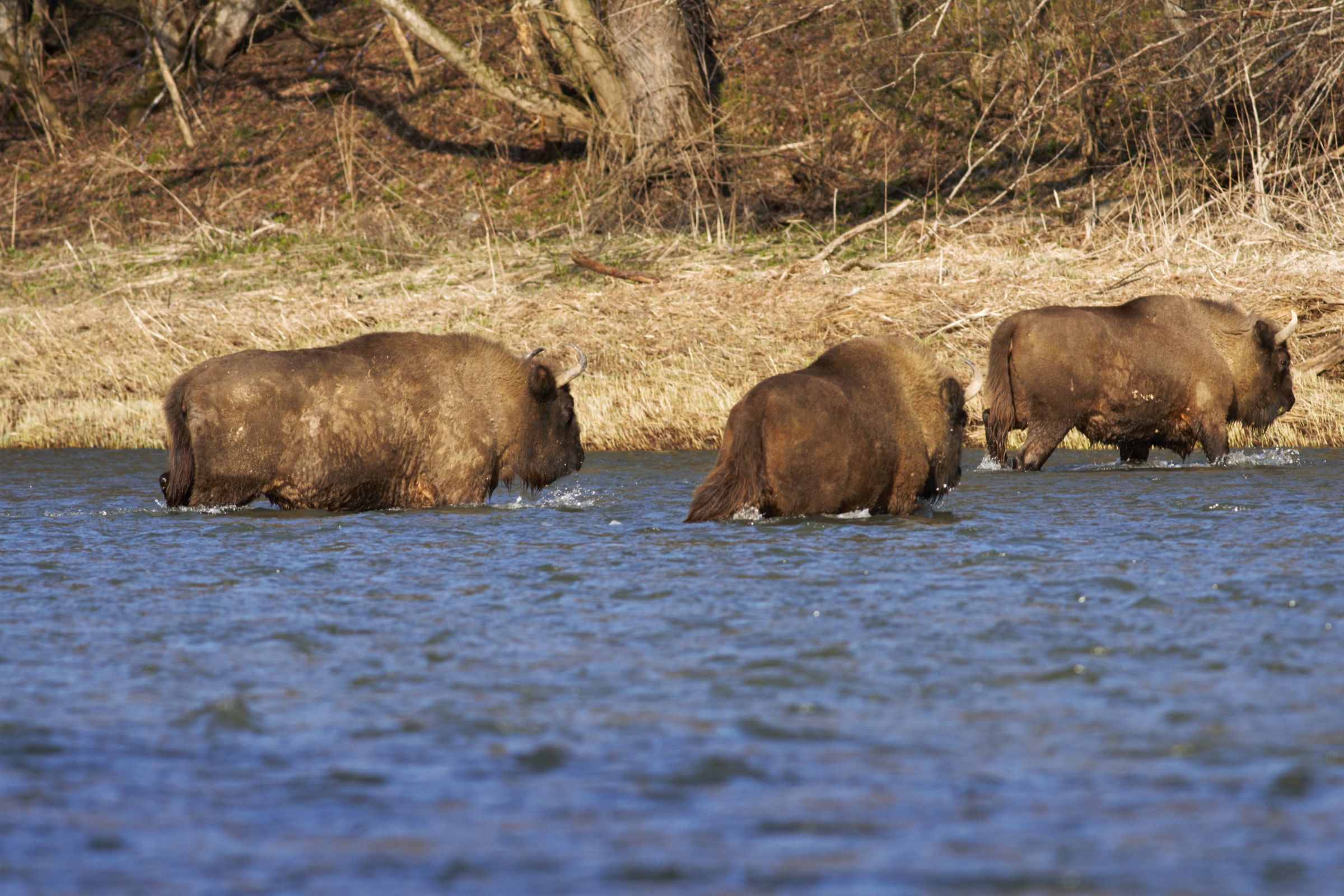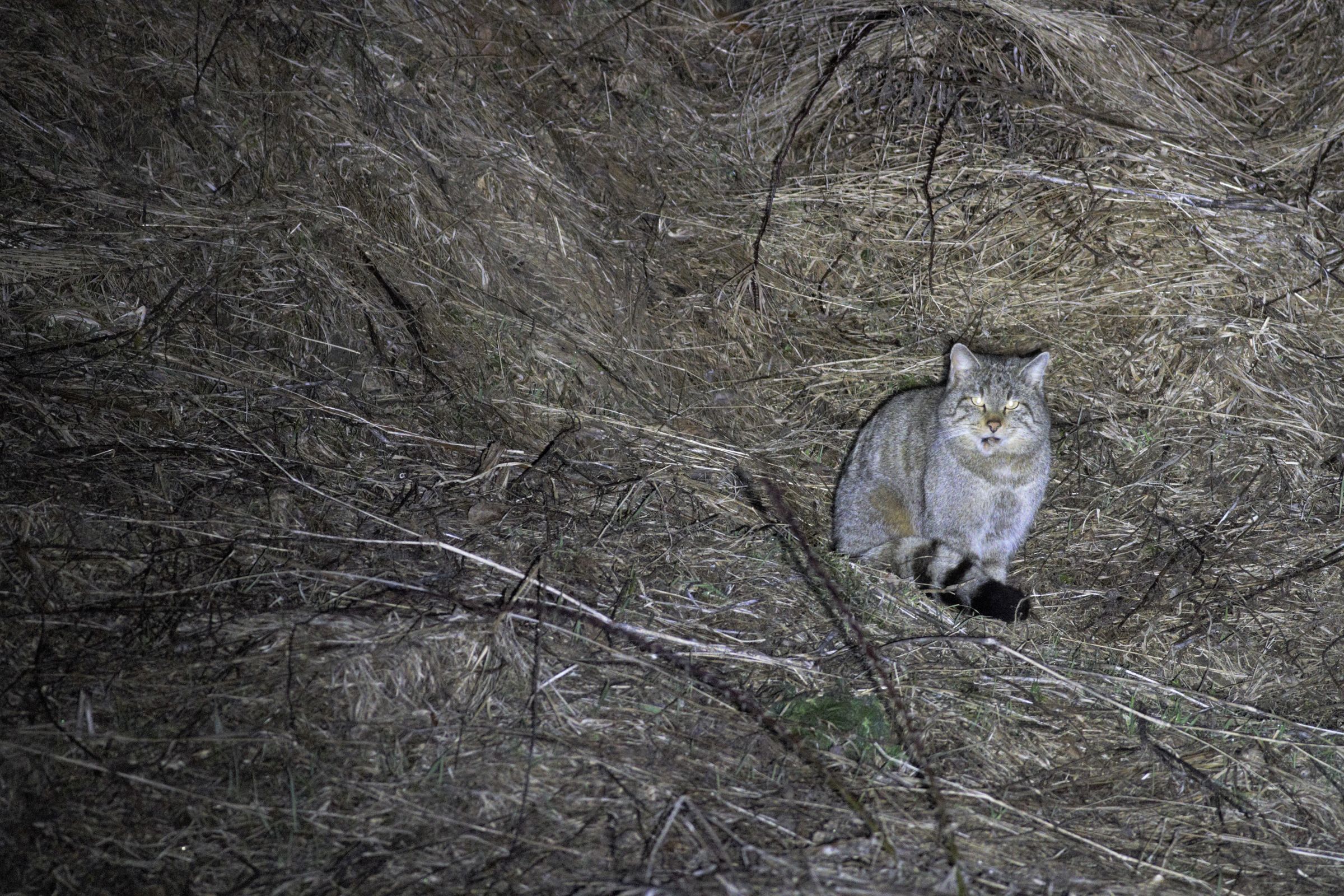Bieszczady – Europe’s version of Yellowstone
- European Bison © Jan Kelchtermans
Multiple freelance guiding in Poland this spring was again very productive. Something we are really proud of. In an enormous area, consistently scoring well in terms of predators and European Bison present, truly unique in Europe. And all this naturally. Hides or blinds were not even used. Everything the real way by:
- driving around,
- scanning from vantage points,
- positioned hidden near foraging sites of targets species,
- using the spotlight after dark.
- A loitering young Wolf in the early morning © Mark Kaptein
- Reminents of a Red Deer that was driven to the river to be killed and eaten by a local Wolf pack © Mark Kaptein
- A roadside encounter with a pregnant alfa female Wolf © Mark Kaptein
- A wolf taking the easiest route to approach its kill © Mark Kaptein
- Red Deer © Jan Kelchtermans
- A roadside patrolling Wolf at 9 in the morning © Jan Kelchtermans
Wolf-wise, we scored all five tours in a row, with at least one close encounter during each tour.
The variety of observations during all these different tours, also very pleasant:
- wolves near prey and, once, a pack of wolves active hunting on a Red Deer;
undoubtedly the highlight of all encounters with this apex predator this spring!
- early spring wolves loitering and sun bathing in places still covered with snow,
- many obs of patrolling packs along tarmac roads in their core area,
- a pack seen several times lead by a clearly visible pregnant alpha female,
In times of COVID Jan was lucky to join Mark, Jillian and Luci while observing a healthy Wolf pack several weeks in a row. With this special thanks from Jan to Mark, Jillian and Luci for making their video compilation available on the EB5 website.
And also in the autumn Wolves were seen with puppies from this year! The future is assured!
Brown Bears
Despite increasing numbers, Brown Bears are much more difficult to observe in Bieszczady. During a walk, footprints in the snow and mud of this four-legged colossus are more the rule than the exception. Despite that, they shun the daylight and, upon hearing human noise or an approaching car, immediately run away. However, four out of five tours we did, we were successful in scoring this omnivore.
- Footprint of an adult Brown Bear © Jan Kelchtermans
Highlights:
- We bump into a Brown Bear foraging on riverine vegetation. Impressive how it caught full speed plunge into the nearby, swollen river to seek the safety of the adjacent forest there.
- Memorable was a Brown Bear that showed up at exactly the same place where we got a Eurasian lynx in the spotlight the day after.
- Another Brown Bear appears twice in a row in the late evening near a place where Ravens are feasting on what must be a wolf kill. Since the location is hard-to-reach; something we can’t verify though.
- A Brown Bear appearinging in the spotlight stands up straight on its hindlegs before looking for the other side of the forest path where we are working with our spotlights. A herd of European Bison occured in the same place a week later. A wolf and a Brown Bear with two cubs in previous years too. Reckon this particular spot is one of the many wildlife corridors present in the area!
- Brown Bear © Zoltan Tolgyesi
- Brown Bear © Astrid Kindsvogel
For Brown Bears, using a photography hut, as we do in Finland, remains the best strategy. Below another photo of tailor made customers Astrid K, and Zoltan T. who did that in the recent past. As the same with H. Nethoefel’s close encounter with a local alfa pair of Wolves!
But in general, the Brown Bears win the hide and seek game here that we play with them. After all, several super fresh tracks of bears that crossed the road surface just before or after us prove this. Ditto the many live material on trail camera footage as well as trash cans ravaged by bears looking for something tasty.
- Trailcam footage of a Brown Bear © Mark Kaptein
- Trailcam footage of a Brown Bear © Mark Kaptein
- Trailcam footage of a Brown Bear © Mark Kaptein
European Bison
- As the tours progressed and the meadows became greener, multiple European Bison sightings were guaranteed. Often near meadows hidden among the woods.
- But this spring we did most of our observations, especially during spotlighting sessions. The animals also behaved remarkably shy.
- Also a favorite are herds of European Bison that show up near the San River to forage on the first green riverside vegetation.
- But the population is suffering from tuberculosis. With a population infection rate of 10 percent something that is downright alarming. The fact that a number of sick animals are allowed to be shot for the second year in a row, is clearly the reason why they behave more shyly. If this situation continues, the future could look a lot worse for this European Bison population, the second largest in Eastern Europe. Fingers crossed that doesn’t happen!
- European Bison © Jan Kelchtermans
- European Bison © Jan Kelchtermans
- European Bison © Jan Kelchtermans
Eurasian Lynx
Here, too, the situation is not rosy. After all, the entire population in SE Poland suffers from a disease that affects the fur of the animals. Something that has already led to the death of many animals in recent winters. So we have to wait for the recolonization of new animals and their young in the coming years.
In the field, tracks of animals were hardly to be found this spring. Let alone observations of animals themselves. Frustratingly, there was also a sighting of a very promising animal that was only briefly seen by Jan through the binoculars during a spotlight session. Very unfortunate as this happened near a well-defined ridge where we found several lynx droppings during a day hike. A place where we have previously been successful in spotting this cat species effectively. So definitely there are still animals roaming in the area!
- Eurasian Lynx © Mark Kaptein
But the last trip of the spring proved that you do score in the end. After all, you force happiness! Or how the persistent always wins. In a place where A Brown Bear appears in the spotlight the night before, an adult lynx is now suddenly in the light beam of the lamp. Moreover, the animal can be photographed filling the screen!
- European Wild Cat © Jan Kelchtermans
Wild Cats were seen on every tour. The size of the animals, the color pattern as well as the typical tail are really decisive with regard to the determination. For Jan and Mark, both main guides in this area, it is not longer difficult to distinguish them from domestic cats around the picturesque villages in the area.
- European Wild Cat © Jan Kelchtermans
Sightings of Otters are rare. Usually foraging in the vicinity of the many Beaver pools in the area or moving in streams during their nighttime patrols through territory. Most often during the night and in the spotlight.
- Otter © Jan Kelchtermans
And then there are the variety of bulk species:
Red Deer, Roe Deer, Red Fox, Beaver, Mountain Hare. Topped with Beech Marten, Pine Marten and a rarities being Wild Boar and Polecat.
We are already looking forward to next spring!
Apart from the people already mentioned, with this special thanks from Jan to all the people of the English agency Naturetrek: Neil McMahon, Josh Pangurha and especially Tom Mabbett!
- Red Fox © Jan Kelchtermans
- Migrating Common Cranes © Zoltan Tolgyesi
- Fire Salamander © Jan Kelchtermans
- Grey Waghtail © Zoltan Tolgyesi
- European Beaver © Jan Kelchtermans
- Ural Owl © Jan Kelchtermans
- Red Squirrel © Jan Kelchtermans
- Dipper © Zoltan Tolgyesi
- Camberwell Beauty © Jan Kelchtermans





























